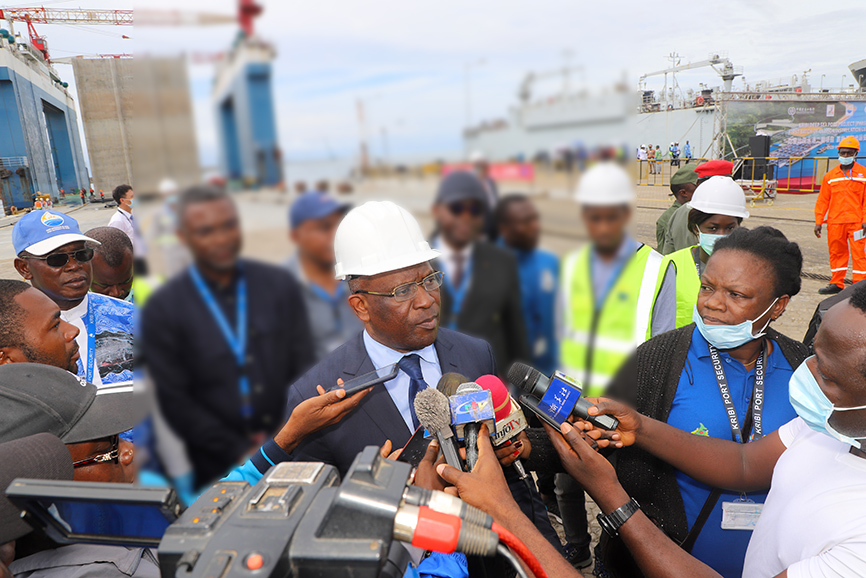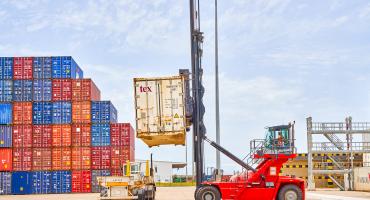On Saturday 22 October 2022, the quays of the Kribi Deep-sea Port were crowded. To smoothly manage the rigorous and compulsory checks at the entry and exit of the Port, the Harbour Master’s Office of the Port of Kribi came up with a smart trick: print quick response codes on invitation cards and run them through an infrared reader. After the checks came the event per se. On the first row, Ernest NGALLE BIBEHE, Minister of Transport, Personal representative of the Prime Minister, Head of Government, flanked with the Minister Delegate to the Ministry of Transport, the Governor of the South Region, the Senior Divisional Officer of the Ocean Division, political and traditional authorities, high officials of public and private companies of the maritime transport and port logistic sectors.


Facing them, a caisson that will leave the prefab area to be transferred 800 metres further to the Phase II new seawall, its final location. The huge concrete block of 17 metres high, 23 metres wide and 24 metres long weighs more than 2,600 tonnes. Prefabricated in high performance reinforced concrete with cathodic protection for a 100-year life span, caissons are huge concrete blocks that will delimit the berthing area for vessels along the port. In practical terms, they will be used to build the berthing quays for vessels.
“I cannot help but be elated when looking at these huge concrete blocks”, said the Minister of Transports, before expressing his appreciation to China Harbour Engineering Company for its commitment and expertise. Patrice MELOM, in his statement, explained that the importance of the launching is threefold: “first, the great progress of the Phase II construction works and the certainty of their completion in the first quarter of 2024. Secondly, the Kribi Deep-sea Port has become a tangible Major Achievement. Finally, it shows the visible efforts of the General Management of the Port Authority of Kribi that is relentlessly working on a daily basis to make the port of Kribi reliable, competitive and sustainable”.
With its strategic position in the Gulf of Guinea, the Port of Kribi, the new gem of Cameroon’s economy, has become the logistic and trade hub for Cameroon, subregional countries and even beyond. In general, Phase II of the construction works is carried out in a surface area of around 500 ha of raw land. CHEC, the Chinese construction company, reassured its Cameroonian partners on their availability “to bring China’s successful experience of port construction and operation to Cameroon, a long friend country to China”.
Eventually, with these developments, the Port of Kribi will be able to provide economic operators with a complete real estate range of warehouses, ready-to-use offices and serviced bare land compliant with the highest standards.
















